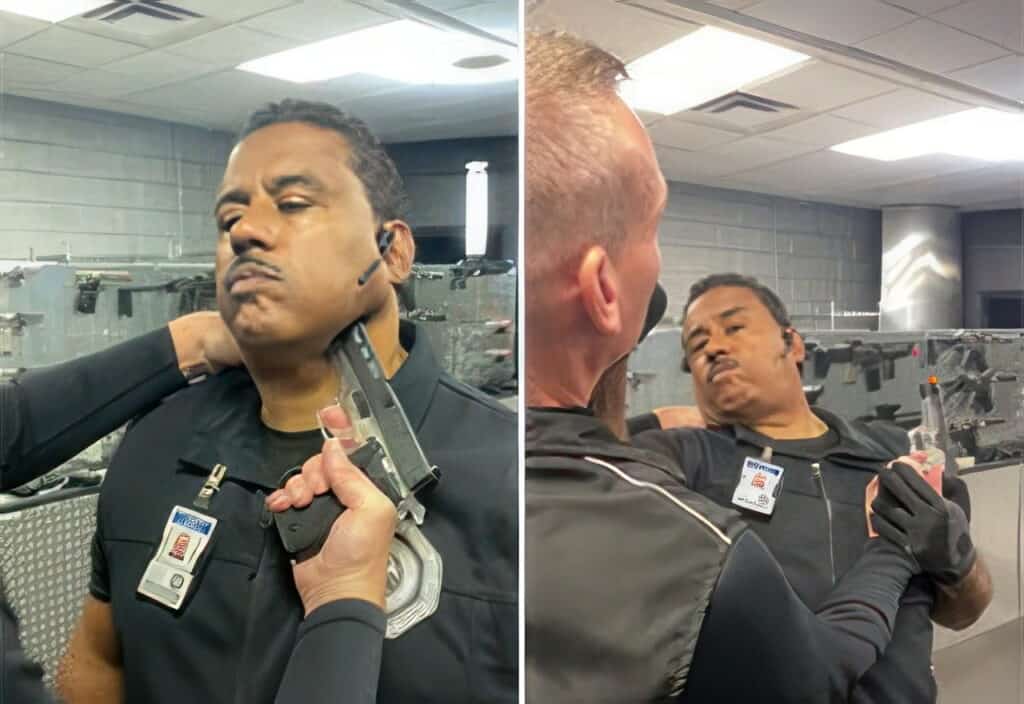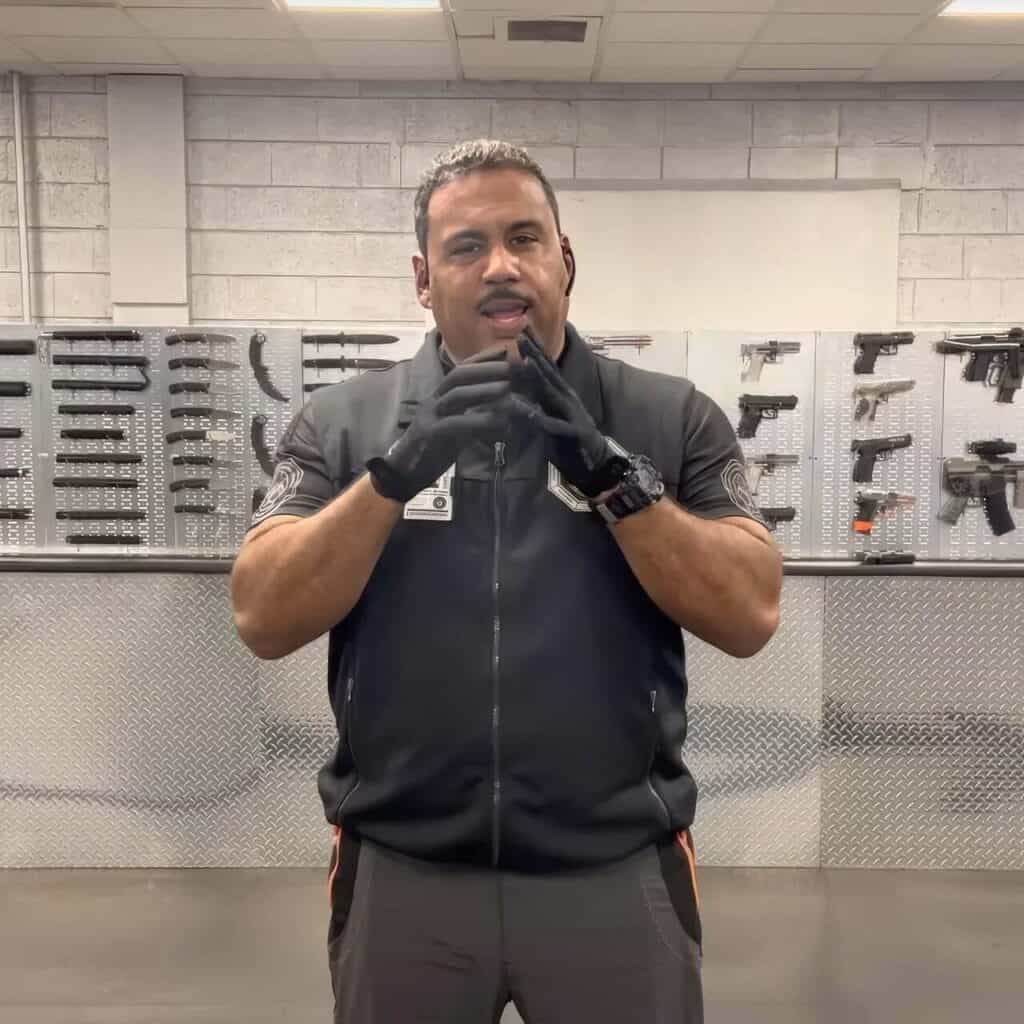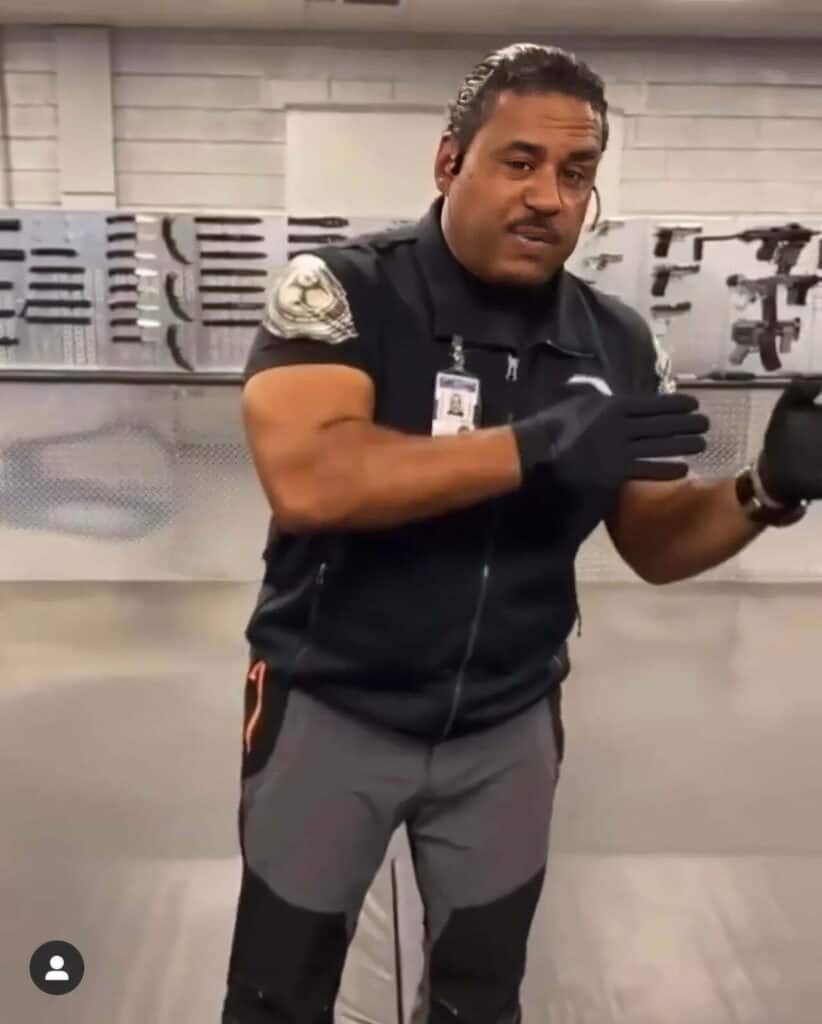Learning effective self-defense techniques is crucial to personal safety in a world where unforeseen danger can lurk around any corner. Enter Dale Brown, the founder of Detroit Urban Survival Training (DUST) and an experienced U.S. Army veteran with a mission to teach invaluable survival skills.
With over 25 years in the industry, DUST offers comprehensive training programs, including basic self-defense methods like Krav Maga, Brazilian Jiu-Jitsu, Boxing, Wing Chun, and Muay Thai.
Despite facing his share of controversy and mixed reviews regarding legitimacy, Brown’s dedication to helping others increase their chances of survival cannot be ignored.
Table of Contents
The Importance Of Self-Defense Training

Self-defense training is essential for anyone to learn as it provides the necessary skills and knowledge to protect oneself from potential dangers and threats in various situations.
Understanding The Need For Self-defense
In today’s uncertain world, the importance of self-defense cannot be overstated. With increasing crime rates and the potential for unexpected emergencies or disasters, it’s crucial to be prepared and equipped with the necessary skills to protect yourself and your loved ones.
For preppers especially, understanding various self-defense techniques is critical as they plan for worst-case scenarios. From dealing with hostile individuals during civil unrest to protecting your resources from theft, having a wide range of self-defense skills at your disposal may mean the difference between staying safe and falling victim to harm.
Benefits Of Self-defense Training
Self-defense training offers numerous advantages for preppers, equipping them with the skills and knowledge needed to protect themselves and their loved ones in dangerous situations. Some key benefits include:
- Enhanced situational awareness: Training helps individuals recognize potential threats, allowing them to react more quickly and effectively.
- Improved physical fitness: Self-defense techniques often require strength, flexibility, and endurance, promoting overall physical health.
- Increased self-confidence: Mastering self-defense skills can boost one’s confidence in their ability to handle difficult situations.
- Practical, real-world application: The techniques taught by Detroit Urban Survival Training (DUST) focus on real-life scenarios to better prepare individuals for urban survival situations.
- Empowerment through education: Learning self-defense allows preppers to take control of their personal safety and security, reducing feelings of helplessness in dangerous situations.
- First aid knowledge: DUST also teaches basic first aid skills as part of its survival training curriculum, ensuring preppers can provide crucial medical care when needed.
- Community building: Engaging in self-defense training fosters bonds among like-minded individuals who value personal safety and preparedness.
- Versatile skillset adaptation: Preppers can customize the techniques they learn from DUST to fit their unique needs and goals, ensuring a well-rounded approach to self-protection.
Overall, learning self-defense techniques promotes personal safety and enhances mental well-being by empowering preppers with greater control over potential threats they may encounter.
Top 5 Self-Defense Techniques Recommended By Dale Brown And DUST

Discover the top self-defense techniques that Detroit Urban Survival Training Guy recommended, including Krav Maga, Brazilian Jiu-Jitsu, boxing, Wing Chun, and Muay Thai. Learn how each technique can improve your physical fitness and mental health while preparing you for real-life scenarios.
Krav Maga: The Art Of Self-defense
As one of the top self-defense techniques recommended by Dale Brown and Detroit Urban Survival Training (D.U.S.T.), Krav Maga is a practical and efficient method designed to equip individuals with the skills to handle real-life situations.
Developed from street-fighting tactics in Israel, this martial art combines elements of boxing, wrestling, judo, and other combat styles into one cohesive system.
A key aspect of Krav Maga’s effectiveness lies in its adaptability; practitioners learn how to use their surroundings as weapons or shields when necessary. For example, if you find yourself cornered by an attacker in a confined space like a dimly lit parking lot or alleyway, knowing how to leverage your environment could mean the difference between being overpowered and escaping unharmed.
Additionally, Krav Maga training emphasizes mental fortitude alongside physical strength – another crucial component for any prepper looking to boost their survival chances.
Brazilian Jiu-Jitsu: Ground Fighting And Grappling
Brazilian Jiu-Jitsu is a highly effective self-defense technique that focuses on ground fighting and grappling. It’s designed to help neutralize an attacker regardless of size or strength.
One of the great things about Brazilian Jiu-Jitsu is that it doesn’t rely on brute force or striking power, which can be difficult for some people to execute. Instead, the focus is on proper technique and leveraging physics in your favor.
By learning these skills with Dale Brown and Detroit Urban Survival Training (DUST), you’ll become better equipped to defend yourself against attackers who may have weapons or are much larger than you.
Boxing: Effective Striking Techniques
Boxing is a well-known martial art that focuses on punches, footwork, and head movements. Dale Brown and DUST recommend learning effective striking techniques as part of their self-defense training.
However, it’s important to note that boxing alone may not be sufficient in some self-defense situations where grappling or ground fighting might be necessary. Combining boxing with other techniques like Krav Maga or Brazilian Jiu-Jitsu can provide a more complete skill set for protecting oneself from attackers.
Wing Chun: Close-range Combat
One of the top 5 self-defense techniques recommended by Dale Brown and Detroit Urban Survival Training (DUST) is Wing Chun. Originating from southern China, Wing Chun is a close-range combat style that emphasizes quick strikes and trapping techniques to neutralize an opponent’s attack.
Wing Chun has been used by many famous martial artists, including Bruce Lee, and it has proven effective in real-life scenarios. It allows practitioners to intercept an attacker’s movements quickly and deliver swift counterattacks using punches, kicks, elbow, or knee strikes.
With regular practice, anyone can learn this technique for self-defense purposes.
Muay Thai: Strikes, Knees, And Elbow Attacks
Muay Thai is one of the top 5 self-defense techniques Dale Brown and Detroit Urban Survival Training (DUST) recommended. This martial art specializes in strikes, knees, and elbow attacks that can be used in close-range combat situations.
The effectiveness of these techniques lies in their ability to quickly immobilize an attacker before they can cause harm. For example, a well-placed knee strike to an attacker’s groin or stomach can incapacitate them long enough for you to escape.
Muay Thai is also known for its emphasis on conditioning and endurance training, making it an excellent overall fitness regimen. Even if you never have to use these self-defense techniques in real-life situations, the physical benefits of practicing Muay Thai cannot be overstated.
Benefits And Uses Of Each Self-Defense Technique

Discover how each self-defense technique highlighted by Dale Brown and D.U.S.T can improve your physical fitness and mental health and protect you in real-life scenarios.
How Each Technique Can Improve Your Physical Fitness And Mental Health
Self-defense training is beneficial for protection in real-life situations and provides a wide range of physical and mental health benefits. Here are some ways each technique can improve your overall well-being:
- Krav Maga: The intensity of Krav Maga training offers an excellent cardiovascular workout, strengthens muscles, and improves flexibility. It also enhances endurance and coordination while simulating high-stress scenarios to help participants remain calm under pressure.
- Brazilian Jiu-Jitsu: Ground fighting and grappling techniques require full-body engagement, providing a great strength-building workout. In addition, the practice of Brazilian Jiu-Jitsu emphasizes focus and problem-solving skills, making it an excellent mental workout as well.
- Boxing: The repetitive movements used in boxing help build muscle mass and improve cardiovascular endurance. Regular practice also helps to develop hand-eye coordination and quick reflexes.
- Wing Chun: Close-range combat incorporates calisthenics and legwork drills that help build stamina and increase balance and coordination while challenging the participant’s power, speed, and agility.
- Muay Thai: Strikes involving punches, kicks, knees, and elbow attacks make Muay Thai a full-body workout that improves overall fitness levels by increasing strength and endurance levels while enhancing balance.
By practicing these self-defense techniques regularly with professional guidance from Dale Brown’s Detroit Urban Survival Training (DUST), participants can improve their physical fitness levels; gain a sense of empowerment through honing their skills in real-life situations while gaining lifelong skills of discipline, patience & perseverance which can transfer into other areas of daily life at home or work.
Real-life Scenarios Where Each Technique Can Be Used
In the real world, situations can arise that require self-defense skills. Here are some scenarios where each of the top 5 self-defense techniques taught by Detroit Urban Survival Training Guy can be useful:
1. Krav Maga:
- Defending against an attacker with a knife or gun
- – Escaping from a chokehold or headlock
- – Protecting against multiple attackers
2. Brazilian Jiu-Jitsu:
- Ground fighting and grappling in case of being taken down by someone stronger
- Protecting yourself while on the ground during an altercation
- Escaping from a bear hug or other hold from behind
3. Boxing:
- Striking effectively during an argument that is escalating into physical violence
- Defending yourself against someone who throws punches at you
- Fighting off someone who tries to steal your purse or bag
4. Wing Chun:
- Close-range combat when confronted with lunging attacks from your assailant
- Blocking strikes with quick responses and powerful strikes
- Dealing with aggressive behavior in close proximity
5. Muay Thai:
- Attacks using knee strikes, elbow strikes, and clinching techniques
- Defense against punches and kicks thrown by an aggressor
- Self-defense tactics when facing someone larger than you
It is important to remember that these techniques are only effective if they are practiced regularly and adapted to fit individual circumstances. As Dale Brown emphasizes, “Survival is not about being tough; it’s about being adaptable.” Choosing the right technique for your needs, consulting with a professional trainer, and practicing regularly can increase your chances of surviving violent encounters.
Choosing The Right Self-Defense Technique For You
Consider your personal needs and goals when selecting a self-defense technique, consult a professional trainer, and customize the techniques to fit your situation.
Factors To Consider When Selecting A Self-defense Technique
Choosing the right self-defense technique is crucial for preppers. Here are some factors to consider:
- Personal comfort level: Choosing a technique you feel comfortable with and can execute confidently is important.
- Physical capabilities: Consider your physical abilities and limitations when selecting a technique. Some techniques may require more strength and flexibility than others.
- Level of danger: Consider the level of danger you may be facing in your area and choose a technique that is suitable for those situations.
- Time commitment: Some techniques may require more time and effort to master than others, so consider how much time you are willing to commit to training.
- Legalities: Make sure the techniques you choose are legal and do not violate any laws or regulations in your area.
By taking these factors into consideration, preppers can select a self-defense technique that best suits their needs and abilities while keeping themselves safe in potentially dangerous situations.
Consultation With A Professional Trainer
Choosing the right self-defense technique for you can be overwhelming. That’s why consulting with a professional trainer is important before committing to any training program.
A consultation will help you assess your current fitness level, skill set, and goals, ensuring that you choose a technique tailored to your needs. For example, if you have previous martial arts experience, Brazilian Jiu-Jitsu might be an excellent choice for honing your ground fighting skills.
Instagram – detroit_d.u.s.t
YouTube – @DetroitThreatManagementCenter
Facebook – detroitdust
TikTok – @detroit_d.u.s.t
Cameo – detroit_dust
A professional trainer can also provide insight into each technique’s benefits and limitations while helping customize them according to individual factors such as age or health conditions.
Remember that choosing the right self-defense technique isn’t about being perfect but rather giving yourself options to increase survivability in different situations.
Customizing Techniques To Fit Your Personal Needs And Goals
When it comes to self-defense training, choosing the right technique is crucial for success. The key factor in selecting the best technique is considering your personal needs and goals.
For instance, if you are someone who wants to focus on striking techniques to defend yourself in close-range situations like a bar fight or mugging, boxing might be the perfect fit for you.
It’s also essential to note that each self-defense technique has unique benefits and uses that cater to specific scenarios. For example, Wing Chun’s close-range combat style makes it ideal for defending against sudden strikes or grabs from an attacker at arm’s length distance while Krav Maga emphasizes simplicity and aggression, making it suitable for military personnel or law enforcement officers facing life-threatening situations daily.
Maintaining And Improving Your Self-Defense Skills

Regular practice is crucial for maintaining and improving your self-defense skills, and attending workshops or classes to learn new techniques can also aid in continued development.
The Importance Of Regular Practice
Regular practice is crucial when it comes to self-defense training. It’s not enough to simply learn a few techniques and call it a day. Practicing regularly ensures that your muscles remember the movements and can instinctively react in any situation.
Additionally, regular practice helps with physical fitness and mental health. Many self-defense techniques involve full-body movements that provide excellent cardio exercise while also building strength and flexibility.
Practicing these techniques also helps reduce stress levels by providing an outlet for pent-up emotions or anxieties.
Workshops And Classes To Learn New Techniques
Detroit Urban Survival Training Guy’s workshops and classes offer an excellent opportunity for preppers to learn new self-defense techniques. These classes are designed to improve individual survival skills, emphasizing preventive threat management systems.
One of the significant advantages of attending these classes is the opportunity to customize your training based on your personal needs and goals. For example, if you want to enhance your striking abilities or ground fighting, Brazilian Jiu-Jitsu or boxing might suit you.
Alternatively, Krav Maga offers effective self-defense strategies aimed at protecting against weapons such as knives and guns.
Strategies For Continued Improvement
To keep improving your self-defense skills, there are a few strategies you can follow:
- Regular Practice: Consistently practicing self-defense techniques is crucial to improving muscle memory and reflexes. Set aside time each week for training and practice in a safe environment.
- Attend Workshops and Classes: Attend workshops and classes to learn new techniques from experts in the field. This will help you stay current with the latest self-defense tactics and gain a fresh perspective on how to approach situations.
- Train with Different People: Training with different people can offer unique challenges, helping you adapt and improve your skills. Find partners who have different skill levels or body types than yours to better prepare yourself for real-life scenarios.
- Incorporate Fitness Training: Physical fitness plays a vital role in self-defense preparedness. Incorporating fitness training into your routine will provide increased endurance, strength, agility, and flexibility.
- Stay Up-to-date on Safety Information: Keep up-to-date on safety information by following news sources and social media accounts that cover safety topics such as crime trends, natural disasters, or emergency preparedness plans.
By consistently practicing, attending workshops, training with different people, incorporating fitness training, and staying up-to-date on safety information, you can continue to improve your self-defense skills over time. Remember that preparation is key to effective self-defense strategies and that investing time in improving these skills is worth it in the long run!
Additional Tips For Self-Defense Preparedness
Some additional tips for self-defense preparedness include being aware of your surroundings and potential threats, having a plan in case of emergency, and carrying self-defense tools legally and responsibly.
Staying Aware Of Surroundings And Potential Threats
One of the most important aspects of self-defense is staying aware of your surroundings and potential threats. This means keeping an eye on people, objects, or situations that could pose a danger to you.
For example, walking with headphones on at night might decrease your awareness and make you an easy target for attackers.
It’s vital to be proactive and take measures to ensure your safety even before any potential threat arises. Additionally, being aware doesn’t only mean looking out for suspicious behavior; it also involves paying attention to factors such as lighting, terrain, and accessibility that may affect your ability to respond effectively if required.
Having A Plan In Case Of Emergency
As a prepper, one of the most crucial things you can do to improve your chances of survival in an emergency is to have a solid plan. Your plan should cover various scenarios, such as natural disasters, civil unrest, or even personal attacks.
One way you can create an effective emergency plan is by envisioning potential situations and determining what steps you would take in each one. For example, what would be your immediate actions if an earthquake in your area caused power outages and damaged roads? Would you stay put or evacuate? Who would you contact for help? By regularly reviewing and refining your emergency plan, you’ll be better prepared to handle unexpected situations with confidence.
Carrying Self-defense Tools Legally And Responsibly
As part of our self-defense preparedness, it’s important to understand the laws around carrying and using self-defense tools. While pepper spray is legal in many states, some areas have restrictions on its potency or require a permit.
In other cases, stun guns or tasers may be prohibited altogether.
Researching and following your area’s regulations is crucial before purchasing any self-defense tool. Improper use can result in legal consequences as well as safety risks.
It’s also essential to practice responsible storage and handling of any weapon, whether lethal or non-lethal.
What are the top 5 self-defense techniques recommended by the Detroit Urban Survival Training Guy?
The Detroit Urban Survival Training Guy’s top 5 self-defense techniques include blocking and striking, grappling, knife defense, firearm defense, and multiple attacker defense.
Is it necessary to have previous martial arts or combat training to learn these techniques?
No prior experience is required to learn these techniques as they can be taught practically, taking real-life situations into account.
How effective are the self-defense techniques the Detroit Urban Survival Training Guy teaches?
The techniques taught by this instructor are designed to be practical and effective in real-life scenarios where your safety may be at risk, making them some of the most reliable methods out there.
Can I practice these self-defense techniques on my own, or do I need a partner or instructor?
While you can certainly practice some of these moves alone (e.g., practicing punches), it’s usually more beneficial to work with an instructor or partner who can give feedback and simulate realistic situations that require quick thinking on your feet.
Conclusion: Empowerment Through Self-Defense Training With Dale Brown And DUST
In conclusion, learning self-defense techniques is crucial in today’s unpredictable world. Dale Brown and Detroit Urban Survival Training (DUST) provide valuable training that can empower individuals to protect themselves and their loved ones.
The top 5 self-defense techniques recommended by Brown and his team – Krav Maga, Brazilian Jiu-Jitsu, Boxing, Wing Chun, and Muay Thai – offer a diverse range of options for people to choose from based on personal preferences and needs.
While there may be some criticism or skepticism regarding Brown’s techniques, the importance of self-defense preparedness cannot be denied. With DUST’s guidance and regular practice of these techniques, individuals can increase their survivability during dangerous situations.


